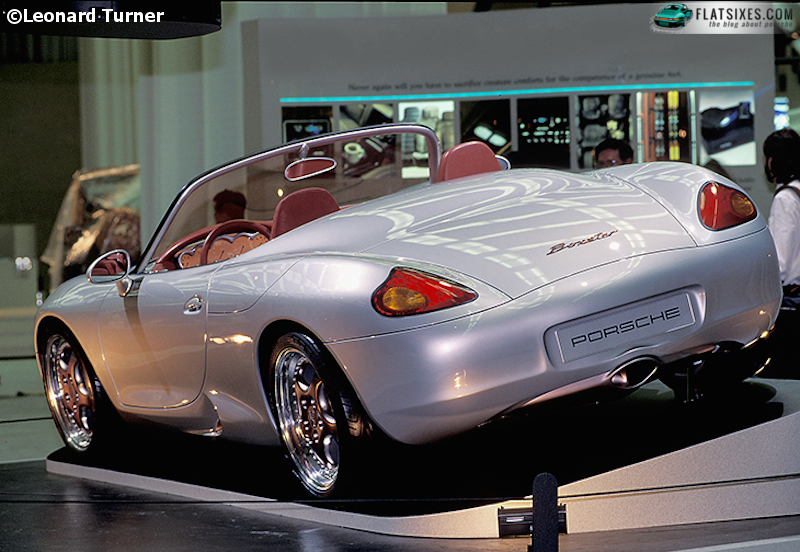Some 20 years on it may seem strange, but Porsche was in a world of pain in the ‘90s. Sales were slow, money was tight, and the 924-944 series had been around for a very long time, eventually breathing its last via the relatively short-lived 968: a great car, but not enough different to be more than a stopgap. The factory had planted rumors of a new car, the 986, and promised a design resonating with the RS-60 Spyders. Another year went slowly by before we were finally summoned to the Detroit Auto Show in January of 1993.

The new Boxster (BOXer motor, roadSTER body) was introduced with great fanfare; after having sat mysteriously covered on Porsche’s stand at the show for a protracted period, the cloth cover was finally lifted by Porsche designer Harm Lagaay and CEO Wendelin Wiedeking to the champagne toast of PCNA boss Fred Schwab. Clearly it was a home run; the design was painted heavily with the Spyder brush, but with an imaginative and innovative modernity. The striking new integrated headlight modules, the heavily styled wheels, the high tech instrumentation, and the interior that was both sumptuous and sparse, played well against the Spyder cues: the through-the-hood gas filler, the single rear exhaust, the side air intakes, the low, cut down windshield and the racing silver paint job. Even the interior rear-view mirror spoke to the teardrop design of the early-days Wendler body works badge!
It was, of course, a prototype. There was no provision for a top, and the car had neither power nor running gear (it was sitting on two Carrera 2 front axles, with the one in the rear turned around backwards). But the goal had been announced, and Panorama said “there is no doubt that the Boxster is the progenitor of the type 986,” citing the numerical designation of the expected new car. I recall being dubious of the name, but hopeful that the real car, when it was produced, would look like the beautiful prototype.
Porsche’s follow-up, the original 986 Boxster, did remain remarkably true to the prototype show car. The requirements for safety and the economic constraints of production cars (as well as the need for a functional top!) brought about some obvious visual changes in the production car, but the feeling and emotion remained intact, and resulted in the quintessential sports car that we all know and love, with the extra unforeseen (by me, at least) benefit of unparalleled handling and road feel.
Still—look again at the prototype. Wouldn’t it be great fun to have a fully operational version of the show car, weighing, say, 1900 pounds and with perhaps 300 hp, a topless stripper that could give a three-day migraine to Boxster Spyders and look just different enough to make knowledgeable people crazy? What do you think? Would you buy one?
